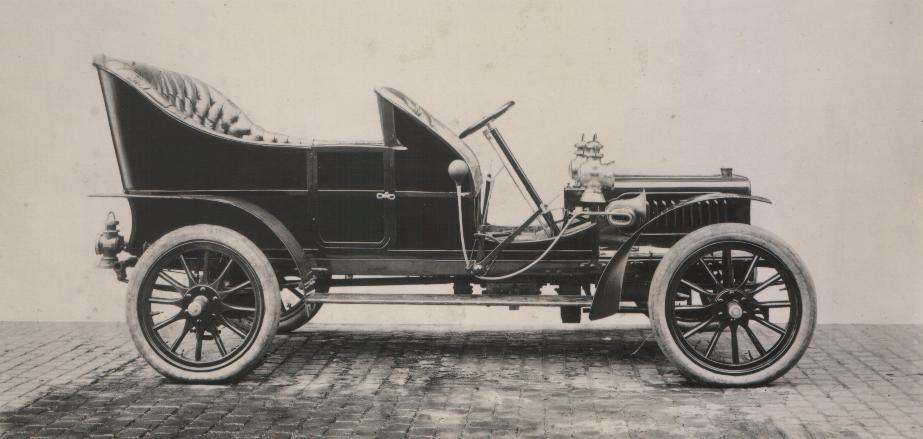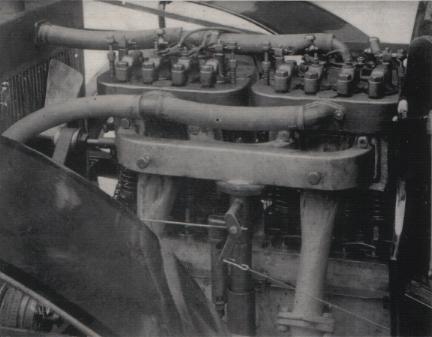
Scottish Achievement
Origin of the Kelvin.
By W. Boddy, Editor of Motor Sport
MARINE folk in general and fisherfolk in particular know all about 'Kelvin' engines and regard them as the Rolls-Royce of their kind.Modern Kelvin Marine Engines are priced at anything from £200 to £2,300 each, and it has been said that the expansion of the fishing fleets round British shores has been very largely due to the reliability of these famous engines, which are built in a factory containing no less than 350 machine tools and extending over five acres.
The Kelvin engine, however, had its origin on dry land. At the end of May 1904 a concern calling itself "The Bergius Car & Engine Company" entered premises at No. 169 Finnieston Street, Glasgow. The annual rent paid was but £75, for the premises consisted merely of the first floor and attic. The staff consisted of twenty year old David Willocks, the Commercial Manager, but usually found at the bench; G. Rutherford, the Patternmaker and Bodywork maker, and W. Hunt, the Machinist, assisted by J. Muir. They drew an average salary of not more than 25s. per week, and in that week worked 54 hours.
Directing affairs was Walter Bergius, himself only twenty-three years of age. He was designer and built the first car, ably assisted by the above-mentioned staff. He did not commence to draw any salary until 1908.
The plant of The Bergius Company included a centre lathe which had been bought new for £66, and a very aged 9 H.P. gas engine provided driving power. £500 covered the value of all the plant for Insurance purposes. Yet this small concern, having decided to enter the Motor Industry, had its first "Kelvin" car finished in seven months.
It had in that comparatively short space of time built the engine, transmission, axles, wheel hubs, radiator and bodywork on the premises. The result was a solid- tyred, rear-entrance car, with low-tension ignition working on the system devised by the late Doctor Murray who was designer of the Arrol-Jolanson and Albion cars of that era.
The Kelvin has a three-speed gearbox in which the gears were in constant mesh and selected by dog clutches, and a live rear axle driven by a propeller shaft, at a time when chain-drive was more normal. The engine developed about 14 H.P. at 900 r.p.m.
The original Kelvin irrevocably damaged its cylinders on its very first trial run but the staff set to work with a will and after new cylinders had been designed, altered the pattern, cast, machined and completed new cylinders within three weeks.
After this, production got into its stride and a new side-entrance body was introduced. One Kelvin was bought by a gentleman living in London and history relates that he set off on the long run home "with a light heart". Another Kelvin did well in the 1906 1,000 mile Scottish reliability trial. The car entered cost £350 and weighed 16 cwts. 2 qr. 2+ lbs. The engine with a bore of 90 m.m. and stroke of 121 m.m. developed 16 H.P. at 950 r.p.m., and the petrol consumption over the 1,000 miles was 22.56 miles per gallon. The trial was of four days duration, and the car had non-stop runs on the first, third and fourth days; unfortunately 15 marks were lost on the second day for being stuck for 15 minutes on Devils Elbow. It is interesting to note that the car was fitted with Gaulois Pneumatic tyres (of French manufacture) and that there were no tyre stoppages during the 1,000 miles.
In all twelve cars were sold, but by then the resources of the Company were at a low ebb. William Bergius, Walter's brother, suggested modifying the car engine for use in boats. To prove his point he put a Kelvin engine in a 23 foot rowing gig and proceeded to win practically all the motor boat races at that time. Soon the Kelvin engine was in demand for fishing boats, and after most of the Scottish fishing fleet had been equipped with 7 H.P. units driving a folding side propeller, which was another idea of William Bergius', larger models were designed and proved equally popular for this arduous work. Incidentally, these original 7 H.P. marine engines had neither clutch nor reverse gear and the price, installed and ready to act as auxiliary to sail, was only £70. This the fisherman usually borrowed half from his friends, and half from The Bergius Company, but so greatly was the fishing capacity of the boat increased that the loans were soon paid back.
That, then, was the origin of the famous Kelvin marine engine, a Scottish achievement if ever there was one and note that it was a case of racing improving the breed. Incidentally, in earlier years the premises at No. 169 Finnieston Street, Glasgow, where the first Kelvin car saw the light of day, were occupied by J. & G. Thomson, now John Brown & Co. Ltd., and later by The Albion Motor Car Company.
The Power unit of the Kelvin Car, from which was developed the well-known Kelvin Marine Engines.
